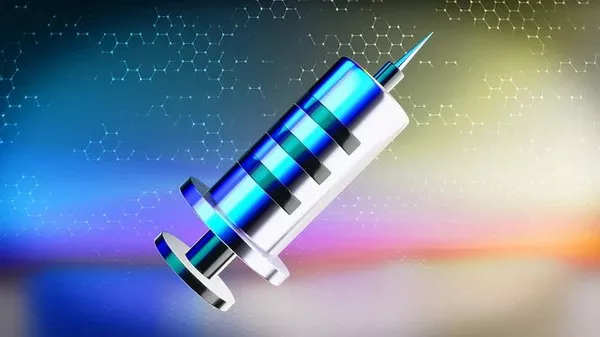Prediabetes is a condition where blood sugar levels are higher than normal but not yet high enough to be classified as type 2 diabetes. It is a serious warning sign and a precursor to the full onset of diabetes if left unaddressed. The good news is that, for many people, prediabetes can be reversed with lifestyle changes, especially dietary modifications. By adopting a balanced, nutrient-dense eating plan, individuals with prediabetes can improve their insulin sensitivity, stabilize blood sugar levels, and significantly reduce their risk of developing type 2 diabetes.
In this article, we will explore the key dietary strategies that can help reverse prediabetes, including the foods to eat, foods to avoid, and the role of portion control, meal timing, and overall lifestyle changes in blood sugar management.
Understanding Prediabetes
Before we dive into dietary recommendations, it’s important to understand what prediabetes is and why diet plays such a critical role in reversing it. Prediabetes is characterized by insulin resistance, which means the body’s cells don’t respond to insulin as effectively as they should. This leads to higher-than-normal blood sugar levels, which over time can damage the organs and increase the risk of cardiovascular disease, kidney problems, and nerve damage. If left unchecked, prediabetes can progress to type 2 diabetes.
The good news is that prediabetes doesn’t have to be a life sentence. With the right dietary choices and lifestyle changes, it is entirely possible to reverse prediabetes and restore normal blood sugar levels.
Key Principles for Reversing Prediabetes with Diet
- Focus on Low Glycemic Index (GI) Foods
- Embrace Whole Foods Over Processed Ones
- Increase Fiber Intake
- Include Healthy Fats
- Choose Lean Protein Sources
- Watch Portion Sizes and Timing of Meals
- Limit Added Sugars and Refined Carbohydrates
1. Focus on Low Glycemic Index (GI) Foods
One of the most important factors to consider when managing prediabetes is the glycemic index (GI) of the foods you eat. The glycemic index is a measure of how quickly a food raises blood sugar levels. Foods with a high GI cause rapid spikes in blood sugar, while foods with a low GI are absorbed more slowly and result in more gradual increases in blood sugar levels.
For individuals with prediabetes, it is essential to focus on low-GI foods. These foods help maintain steady blood sugar levels and improve insulin sensitivity over time. Some examples of low-GI foods include:
- Whole grains like quinoa, oats, barley, and whole wheat.
- Non-starchy vegetables such as spinach, broccoli, cauliflower, and bell peppers.
- Legumes such as lentils, chickpeas, and black beans.
- Fruits like apples, pears, and berries.
By choosing these foods, you can help regulate your blood sugar levels while also providing your body with essential nutrients that promote overall health.
2. Embrace Whole Foods Over Processed Ones
The modern diet is often full of processed and ultra-processed foods that are rich in refined sugars, unhealthy fats, and sodium. These foods not only have a high glycemic index but can also contribute to weight gain, which is a major risk factor for developing type 2 diabetes.
To reverse prediabetes, it’s crucial to reduce your intake of processed foods and focus on whole, unprocessed foods. This includes:
Fresh vegetables: Choose a variety of colorful vegetables such as leafy greens, cruciferous vegetables (broccoli, cauliflower), carrots, and bell peppers.
Whole fruits: While fruit contains natural sugars, whole fruits are packed with fiber, vitamins, and antioxidants that help stabilize blood sugar.
Whole grains: Whole grains such as brown rice, quinoa, and farro are rich in fiber and essential nutrients that slow the absorption of sugar into the bloodstream.
By prioritizing whole foods, you provide your body with the nutrients it needs to maintain healthy blood sugar levels without the added sugars, preservatives, and unhealthy fats found in processed alternatives.
3. Increase Fiber Intake
Dietary fiber is a key nutrient for managing blood sugar levels and improving insulin sensitivity. Fiber slows the absorption of sugar into the bloodstream, helping to prevent rapid spikes in blood glucose. Additionally, fiber plays an essential role in digestive health and weight management.
There are two types of fiber: soluble fiber and insoluble fiber. Both types are important, but soluble fiber, in particular, has been shown to have a significant impact on blood sugar control. It forms a gel-like substance in the digestive tract, which helps slow the absorption of glucose.
Foods that are rich in fiber include:
Fruits: Apples, pears, berries, and oranges are great sources of soluble fiber.
Vegetables: Leafy greens, Brussels sprouts, and sweet potatoes are high in fiber.
Whole grains: Brown rice, oats, barley, and quinoa.
Legumes: Beans, lentils, and peas are packed with both soluble and insoluble fiber.
Aim to consume at least 25-30 grams of fiber per day, and focus on incorporating fiber-rich foods into every meal.
4. Include Healthy Fats
Incorporating healthy fats into your diet can help improve insulin sensitivity, reduce inflammation, and support heart health. Individuals with prediabetes are at a higher risk of developing heart disease, so it’s crucial to choose fats that are beneficial for overall health.
Healthy fats, especially those rich in omega-3 fatty acids, help reduce the chronic inflammation that is often present in prediabetes. Omega-3 fatty acids also improve blood lipid levels and insulin sensitivity.
Some excellent sources of healthy fats include:
Nuts and seeds: Almonds, walnuts, flaxseeds, and chia seeds are rich in healthy fats and fiber.
Fatty fish: Salmon, mackerel, sardines, and trout are high in omega-3 fatty acids, which help reduce inflammation.
Olive oil: Extra virgin olive oil is rich in monounsaturated fats and antioxidants that help improve insulin sensitivity and reduce inflammation.
Avocados: Avocados provide heart-healthy monounsaturated fats and are also rich in fiber and potassium.
Incorporating these healthy fats into your diet can help you manage your weight, improve blood sugar levels, and support overall metabolic health.
5. Choose Lean Protein Sources
Protein is an essential nutrient that helps build and repair tissues and supports overall health. For individuals with prediabetes, it’s important to choose lean protein sources that do not contribute excessive amounts of saturated fat, which can worsen insulin resistance.
Some excellent lean protein sources include:
Poultry: Skinless chicken and turkey are low in saturated fat and provide high-quality protein.
Fish: Fatty fish like salmon and tuna are not only high in protein but also contain heart-healthy omega-3 fatty acids.
Tofu and tempeh: These plant-based protein sources are low in fat and can be a good alternative for vegetarians and vegans.
Eggs: Eggs are a good source of high-quality protein and healthy fats. If you are concerned about cholesterol, you can opt for egg whites or use whole eggs in moderation.
Protein helps stabilize blood sugar levels by slowing the absorption of glucose and promoting satiety, which can prevent overeating and support weight loss efforts.
6. Watch Portion Sizes and Timing of Meals
While the types of foods you eat are important, portion control and meal timing are also crucial factors in managing prediabetes. Overeating, even healthy foods, can lead to weight gain, which increases insulin resistance and exacerbates blood sugar problems.
To avoid overeating and regulate blood sugar levels, consider the following:
Practice portion control: Use smaller plates and bowls to help manage portion sizes. This can prevent you from overeating and help you maintain a healthy weight.
Eat regular, balanced meals: Instead of skipping meals or having large, infrequent meals, aim for three balanced meals a day with healthy snacks in between. This helps keep blood sugar levels stable.
Don’t skip breakfast: Skipping breakfast can lead to overeating later in the day and cause blood sugar spikes. Include a balanced breakfast that includes protein, fiber, and healthy fats to kick-start your metabolism.
Consider meal timing: Eating smaller meals throughout the day may help prevent blood sugar spikes. Some people find that consuming their largest meal earlier in the day and eating lighter dinners helps manage blood sugar levels more effectively.
7. Limit Added Sugars and Refined Carbohydrates
One of the most important dietary changes for reversing prediabetes is to eliminate added sugars and refined carbohydrates from your diet. These foods cause rapid spikes in blood sugar levels and contribute to insulin resistance. They also provide little nutritional value and can lead to weight gain, which is a major risk factor for type 2 diabetes.
Avoid sugary drinks: Sodas, sweetened coffees, and energy drinks are packed with added sugars and can cause blood sugar spikes. Instead, opt for water, herbal teas, or black coffee without added sugar.
Cut out refined carbohydrates: Refined carbs, such as white bread, pasta, and baked goods made from white flour, can quickly raise blood sugar levels. Choose whole grains instead.
Limit processed snacks: Many processed snacks are high in sugar, unhealthy fats, and refined carbs. Choose whole-food snacks like fruits, nuts, and yogurt.
Reducing the intake of these foods helps prevent blood sugar spikes, reduce inflammation, and support weight loss, all of which are critical for reversing prediabetes.
Conclusion: A Holistic Approach to Reversing
Prediabetes Reversing prediabetes is not just about changing your diet, but also adopting a holistic approach that includes physical activity, stress management, and adequate sleep. A well-rounded lifestyle plan, focusing on nutrient-dense foods, portion control, and balanced meals, is essential for managing blood sugar levels and improving overall health.
By prioritizing low-GI foods, whole foods, fiber, healthy fats, lean proteins, and reducing added sugars and refined carbs, individuals with prediabetes can significantly lower their risk of developing type 2 diabetes. As with any significant lifestyle change, it is advisable to consult with a healthcare provider or a registered dietitian to tailor your diet and ensure that it aligns with your unique health needs. With the right strategies in place, reversing prediabetes is entirely achievable and can lead to a healthier, more vibrant future.
Related topics:
What’s the Best Flours for Diabetics


























